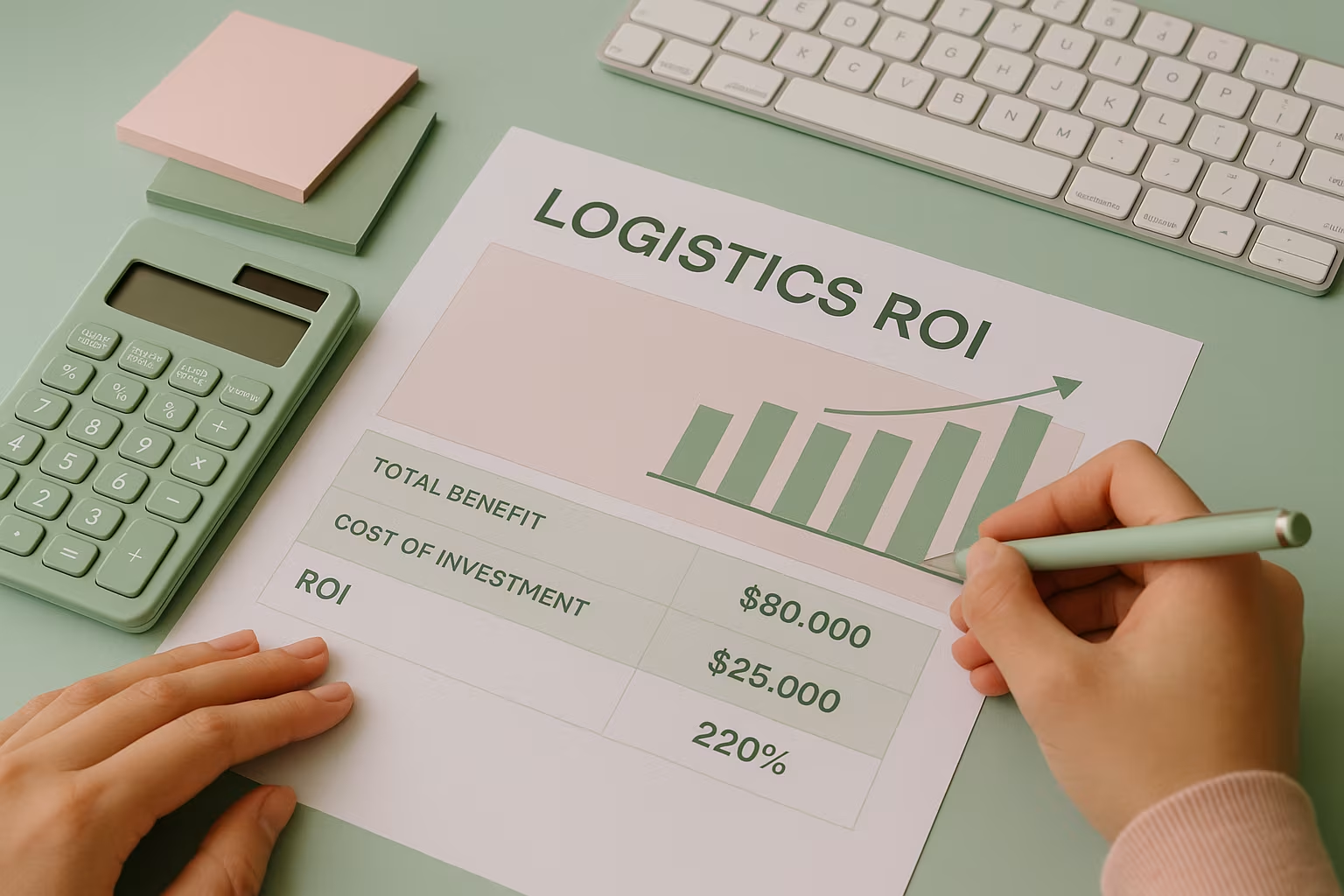Break-Even ROAS Calculator: Find Out What You Can Afford to Spend on Ads
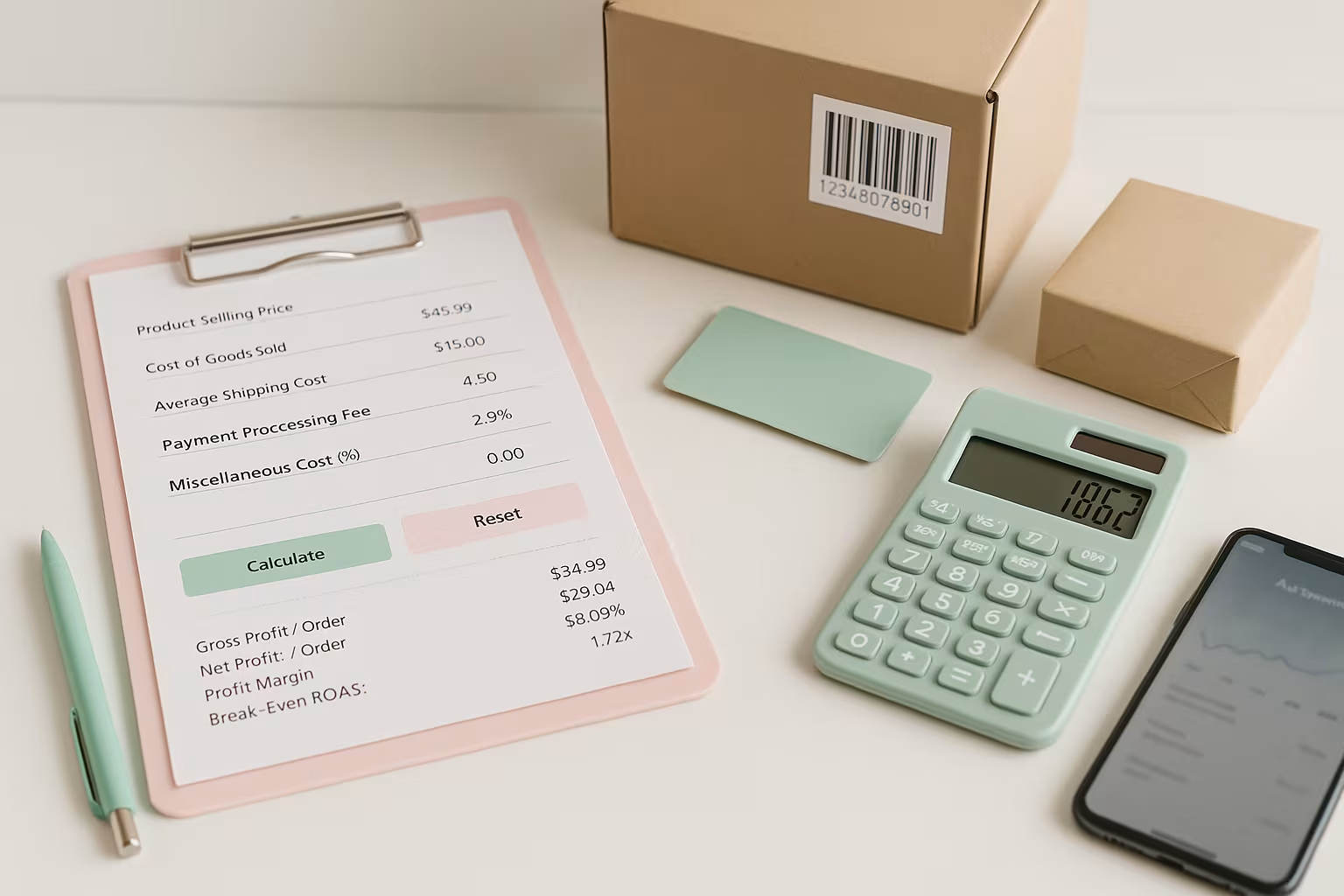
In paid media, guessing is expensive. When you run a product-based ecommerce business, especially in dropshipping or private labeling, you can’t afford to know your break-even ROAS.
Break-even ROAS (Return on Ad Spend) tells you the minimum amount of revenue you need to generate from every ad dollar just to avoid losing money. It's not an estimate. It’s your baseline.
The break-even ROAS calculator is built for sellers who want margin control, not just revenue growth. It factors in every meaningful cost that impacts your ability to profit, whether you're fulfilling custom-labeled supplements or bundling beauty SKUs.
Key Metrics that Break Even ROAS Calculator Tracks to Protect Your Margin
Every field in the Break Even ROAS Calculator serves a specific purpose. It’s not just about getting a ROAS number; it’s about understanding the real financial mechanics behind each order.
These metrics ensure you’re not overspending on ads or underestimating your cost structure. Here’s a quick breakdown of the essential inputs:
Product Selling Price
This defines your revenue potential per order. It’s the foundation of your ROAS equation. If it’s set too low relative to your cost stack, no amount of ad performance can fix a negative margin.
Cost of Goods Sold (COGS)
This is what it costs you to produce or purchase the product, especially important for private label sellers managing manufacturer pricing. Higher COGS = higher risk if ROAS drops even slightly.
Average Shipping Cost
Shipping fees vary depending on region, weight, and fulfillment model. Not accounting for them inflates your profit estimates and leads to misleading ROAS benchmarks.
Payment Processing Fee (%)
These are automatic deductions from platforms like Shopify, Stripe, or PayPal. A few percentage points per transaction quickly add up, especially at scale.
Miscellaneous Costs
Inserts, special packaging, freebies, or even labeling fees fall here. These small, recurring costs are easy to overlook and just as easy to fix once you identify them.
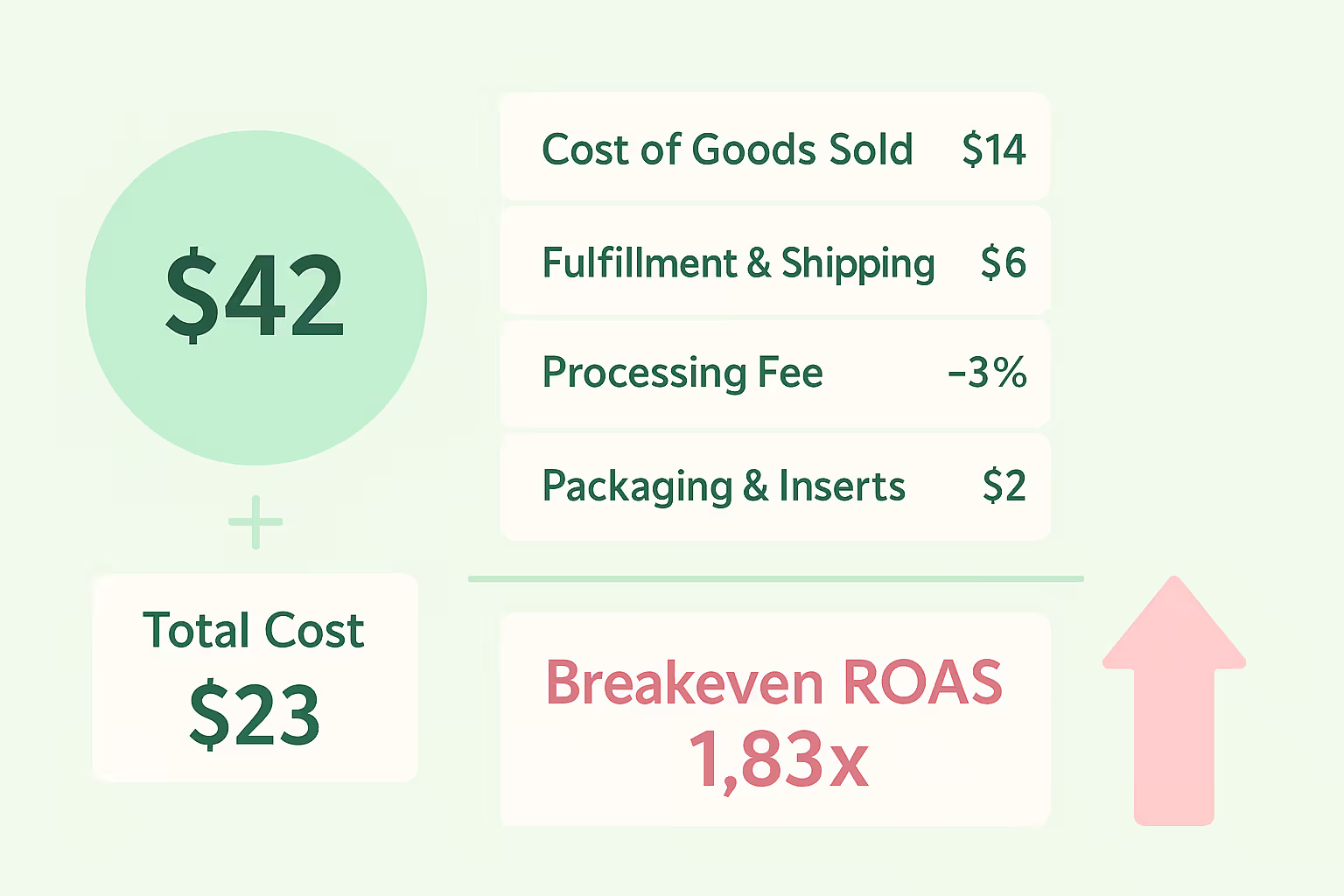
How Your True Costs Shape Your ROAS Threshold
Every product you sell has a different cost structure. That means every SKU technically has its break-even ROAS.
Let’s say you’re selling a functional mushroom powder for $42. Your COGS is $14, your fulfillment + shipping is $6, your processing fee is ~3%, and your packaging and inserts cost $2.
Plug those into the calculator, and your total cost per order lands around $23. With a $42 selling price, your gross margin is already compressed. You’re not just looking for any ROAS, you’re looking for one that exceeds your breakeven threshold, which might be 1.83x in this case.
Without this insight, you might assume a 2x ROAS is great. But if your product bundle’s costs increase by even $3, that same ROAS could dip into unprofitable territory.
That’s the trap. Most sellers optimize for ROAS without understanding the margin it’s built on.
High ROAS, Low Profit? Here's Why That Happens
It’s easy to fall into the illusion that “more ROAS = more profit.” But if your product costs, fees, and returns eat into revenue, you could hit a 3x ROAS and still net next to nothing.
Common reasons this happens:
- Underestimating transaction fees: Stripe or PayPal takes a percentage, and Shopify may take another cut on top.
- Forgetting micro-costs: $1 inserts or bonus samples sound minor, but they scale with every sale.
- Shipping under quotes: Lightweight doesn't always mean cheap. International shipping and DIM weight charges can inflate quickly.
- Ignoring refund rates: If 10% of orders are returned, your profit projections are off by 10%.
The Break-Even ROAS Calculator makes all of these visible, so you don’t make growth decisions based on surface-level data.
Situations Where This Calculator Can Save You Money
This isn’t just a planning tool. It’s a margin-saver. Use it every time there’s a shift in your business model, pricing, or campaign strategy.
Here are high-impact situations where this calculator earns its keep:
1. New Product Launches
Test the profit potential before you even run ads. Knowing your breakeven target helps you set smarter price points upfront.
2. Bundle or Multi-Pack Pricing
Bundling lowers the per-unit margin. Recalculate before you discount to ensure the offer still works financially.
3. Scaling Paid Ads
Before increasing your ad spend, check if your current ROAS has room. If your breakeven is 1.72x and you’re hitting 1.6x, scaling could push you deeper into the red.
4. Switching Fulfillment Models
Moving from self-fulfillment to a 3PL or working with a fulfillment partner? Add the new pick-and-pack fees and recalculate. Even a $0.75 increase in cost changes your ROAS floor.
5. Running Seasonal Discounts or Freebies
Flash sales might drive conversions, but they can quietly destroy your margin. Use the calculator to sanity-check promo campaigns.

Reverse-Engineer Your Target ROAS for Profitable Scaling
Break-even is just the start. Real growth comes from knowing your ideal ROAS target based on the margin you want to earn.
Here’s how to reverse-engineer it:
- Define your target profit per order (e.g., $20).
- Add it to your total cost per order (e.g., $24).
- That’s your required revenue per order ($44).
- Now divide by ad spend to set your target ROAS.
So if you’re spending $10 to acquire a customer, your goal ROAS is $44 ÷ $10 = 4.4x.
This approach helps you build sustainable campaigns, not just ones that break even.
When to Revisit Your Numbers (It’s More Often Than You Think)
Your break-even point is not static. Recheck your numbers any time something in your cost stack or pricing changes.
You’ll want to re-use the calculator when:
- You renegotiate supplier terms
- You change SKUs or packaging
- You update your shipping method or zones
- You run a new paid channel (Meta, TikTok, Google)
- You launch a limited-time offer or bonus pack
- Your return rate or refund policy shifts
Most brands that fail to scale profitably don’t have a traffic problem; they have a margin blind spot. This calculator closes that gap.
Expert Margin Tip: Factor In Returns Before You Scale
One of the most overlooked elements in ecommerce ROAS modeling is returns.
Let’s say you sell a product for $50, and your break-even ROAS is 1.7x. But you have a 10% return rate. That’s a 10% revenue deduction that doesn’t reduce your ad cost.
So what looked like a 1.8x ROAS (profitable) is now effectively 1.62x (unprofitable).
Returns are silent profit killers, especially in categories like skincare, supplements, or wellness bundles. If your return rate is over 5%, adjust your breakeven ROAS upward to stay safe.
Pro sellers input a “return-adjusted” AOV into the calculator to get a more realistic benchmark before scaling campaigns.
Make Every Dollar of Ad Spend Count
Break-even ROAS is one of the most critical metrics for ecommerce brands, yet it’s rarely used correctly. Guesswork leads to overspending. Accurate ROAS modeling leads to confidence, sustainability, and profit-focused scaling.
Whether you’re testing a new product, optimizing ad spend, or switching fulfillment workflows, the Break-Even ROAS Calculator gives you instant clarity.
Run your numbers now. Know your threshold. Then spend with precision.
FAQ
Related blogs
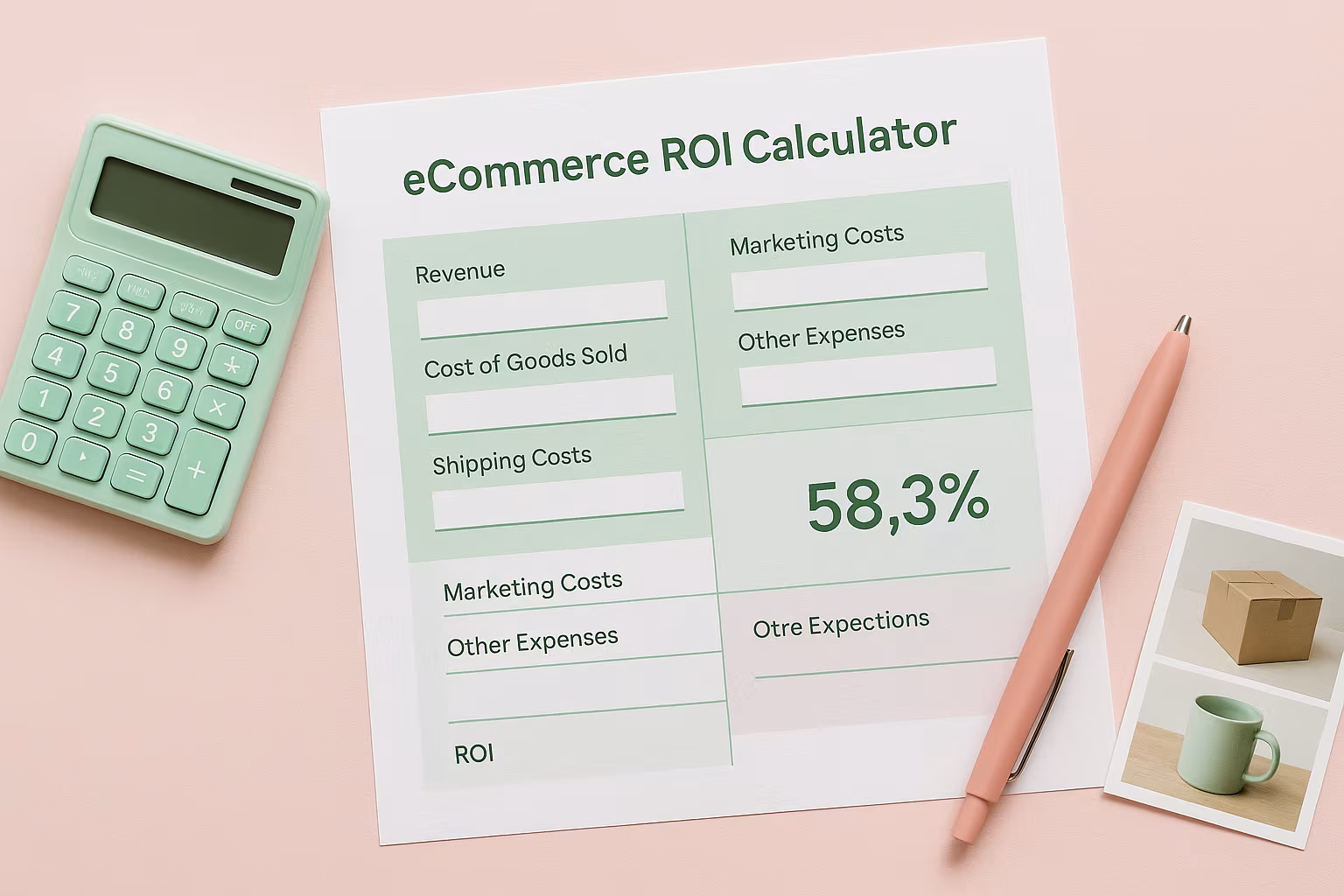
Ecommerce ROI Calculator: Scale Your Store

Customer Lifetime Value Calculator: Unlock Your E-commerce Revenue Potential
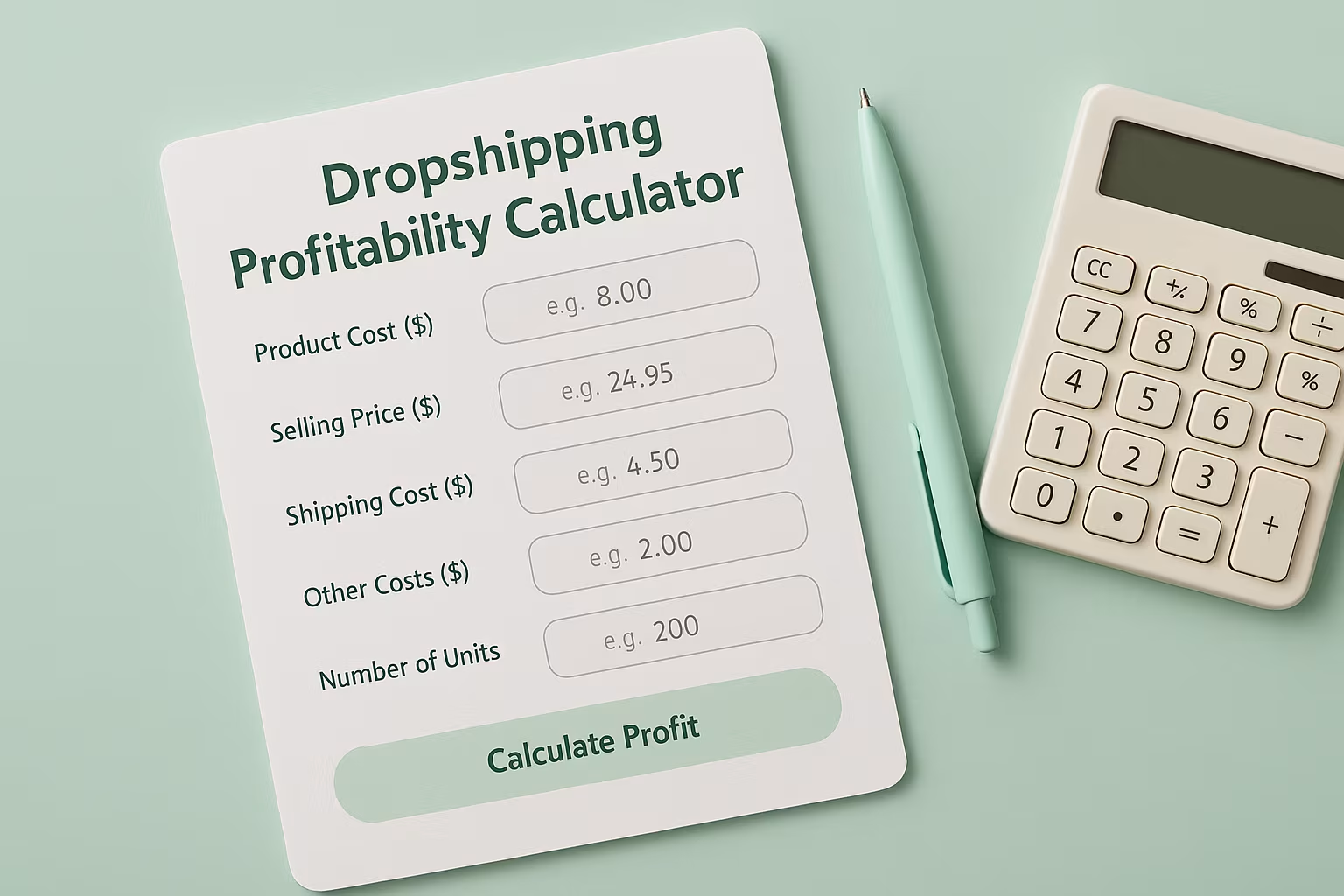
Dropshipping Profitability Calculator: Instantly Reveal Your Earnings
